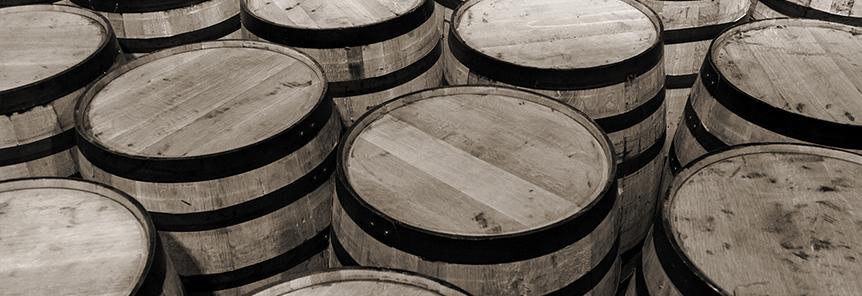Barrels + Beer
By Noah Steingraeber
But barrels and beer have a shared history. They have been paired since the creation of barrels thousands of years ago. In the early days, barrels served as vessels to store and transport products like water, nails, salted meats, wine, spirits and of course – beer.
Fast-forward to modern times and brewers are still using barrels to store and transport beer. However, today’s brewers have a myriad of barrel types, toasts, chars and flavor profiles to choose from when aging beer. Utilizing these options, brewers can finesse a beer’s flavor profile beyond what can be achieved in a steel tank.
Many craft brewers have tailored barrel-aging programs, using a combination of barrel types, toasts, and chars to impart specific, desired and repeatable characteristics to their beer. However, brewers also like to push style boundaries and come up with innovative experiments using barrels.
Currently, there are several barrel-aged beer trends in the industry. Let’s explore how the results are achieved with a barrel.
Bourbon Barrel Aged Beers
Partly due to bourbon’s surging popularity, beer aged in used bourbon barrels has become prevalent in the industry. A brewer may take a heavy imperial stout with a typical ABV between 7-9% and age it in used bourbon barrels for anywhere between three to 18 months. The beer soaks up the bourbon and oak flavors – such as roasted spices, dark cherry, caramel and sweet vanilla. The final product will be something like Firestone Walker’s Parabola – Russian Imperial Stout which clocks in at 12.7% ABV.
Others will solera age beer in bourbon barrels like a Spanish sherry or rum, and increase the alcohol by volume up to 28% (Sam Adam’s “Utopias,” 28% ABV) which teeters on the verge of being almost port-like.
Funky, tart and fruited, “sour beers” are created by aging beer in used wine barrels. Styles like Lambic, geuze, saison and bier de garde are blended and aged in a barrel for up to three years (occasionally more). Sometimes fresh fruit will be added in to impart additional flavor, along with yeast like Brettanomyces and bacteria such as lactobacillus – items that make many winemakers cringe! Also, unlike winemaking, brewers tend to prefer heavily used wine barrels with minimal to zero oak character.
Tequila Barrel Aged Beers
Some brewers have mastered the use of tequila barrels which impart some earthy, agave-like tones from the barrel. These flavors complement a salty Gose and create a “margarita” style beer, such as Rhinegeist Brewing’s, “Marg Monday,” 5.2% ABV.
Creative Barrel Exploration
Other barrel-aged beer gets really creative – for example J. Wakefield Brewing, “Bake Kujira - Maple Rum Barrel Aged Big Poppa” 17% ABV - an American Double Imperial Stout with coffee, coconut, and vanilla beans added, that is finished in a rum barrel that also aged maple-syrup.
If you haven’t, I suggest you venture out of your usual beer order and try a wine barrel-aged sour with dinner or bourbon barrel-aged stout for dessert. I think you will be pleasantly surprised by the variety of flavors you can discover in barrel-aged craft beer.



